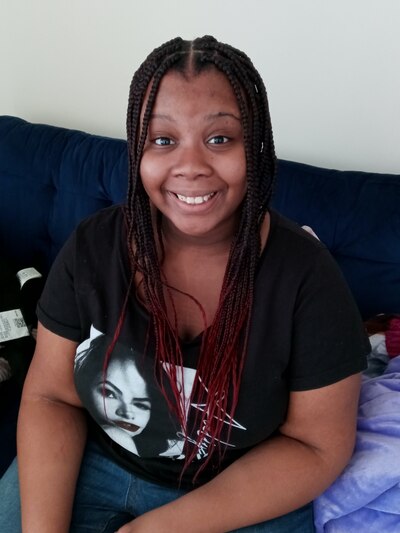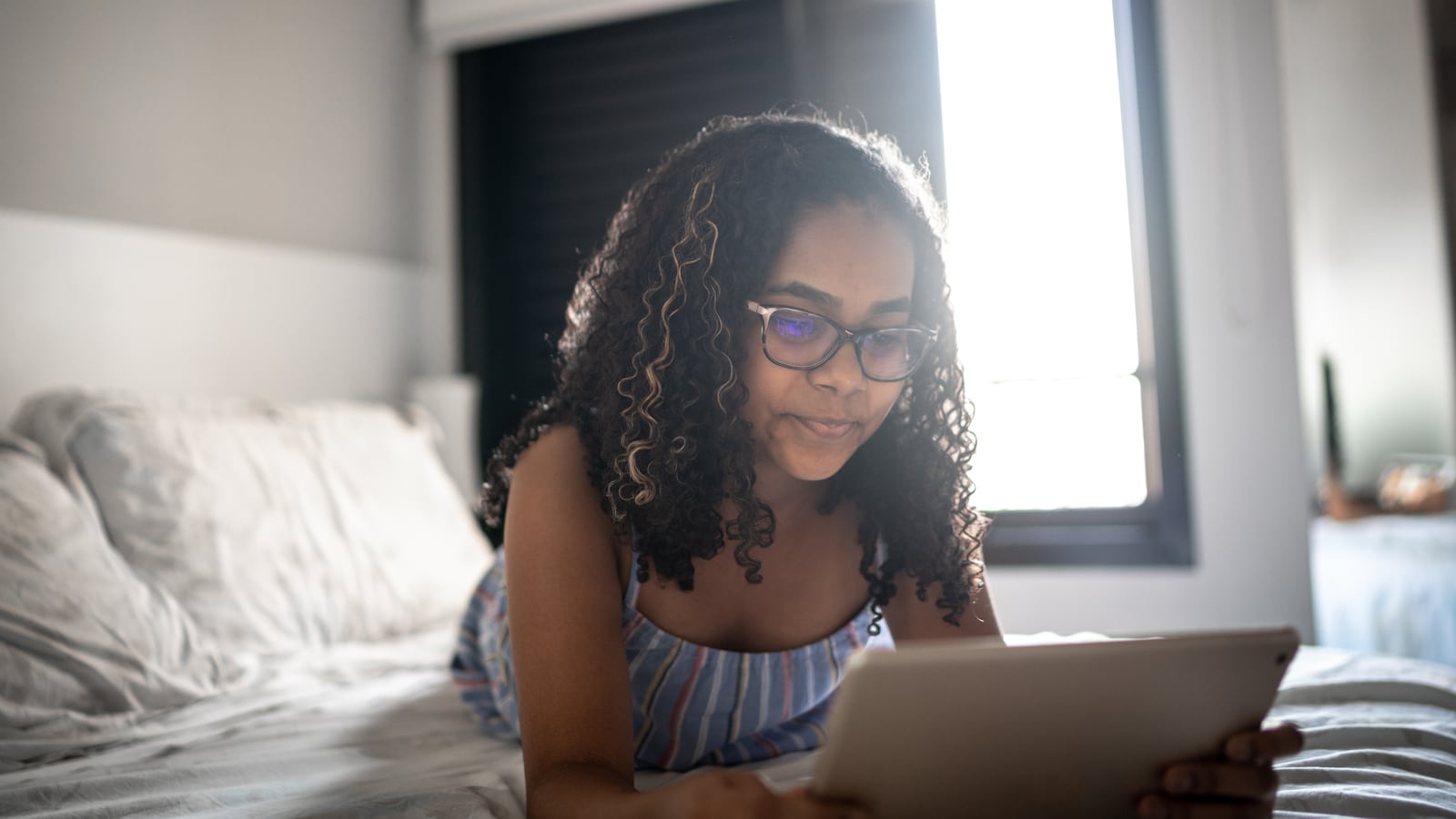Before March 2020, everything was normal: I was in eighth grade at Columbia Heights Educational Campus in Washington, D.C. We were reading a book that I loved, “All American Boys.” Then, my homeroom teacher started talking about a plague, and I heard about a virus and lockdowns happening in China. All of a sudden, we were out of school and learning from home.
At first, I was stressed because I was totally confused about how to navigate the new technology and platforms like Zoom and Canvas that we used for remote learning. My school provided a computer, but it wasn’t working and we had to ask them for a new one.

During school, my little sister would sit next to me with her Zoom class playing loudly next to mine. I struggled to hear what my teacher was saying, sending my stress levels through the roof.
Eventually, though, we found a way to make it work. My mother talked with me about my feelings and eventually created study stations around the house so that my sister and I rotated through different rooms as the day went on. It was almost like our school transitions.
So when I heard that my freshman year of high school would begin virtually in fall 2020, I wasn’t sad about it. I had learned how to navigate the technology and started to like remote learning. I set high standards for myself, so I could achieve my dream of going to college. I felt more content.
Much research has focused on the negative impacts of virtual learning on students’ mental health and success, especially those who lacked necessities and a quiet place to work. But some students like me thrived out of the classroom. We had more time to relax, spend time with family, and sleep. There was less pressure to do a million extracurricular activities.
Research published in the Journal of Pediatric Psychology in October shows that other adolescent girls had a similar experience during the pandemic: On 70% of pandemic days, the girls in the study reported that they had more time to relax; on more than half of days they spent more time with family; and on 42% of days said they had more free time for creative pursuits.
As I found myself spending more time with my family, I felt more serene. Time management was also easier while working from home, in part because I got more sleep. Not getting enough sleep is a big problem for any teenager, and it’s associated with decreased immunity, poor eating habits, and can negatively affect learning, among other outcomes. The research shows how crucial it is for students to sleep, relax, grow, and reflect.
I started to focus on organization. In middle school, I had not been really organized with my school work, but virtual learning made it easier. Everything I needed was in my house! Nothing got left behind at school or in a class.
For students like me, though, virtual learning was a blessing.
At Roosevelt High School, where I am a sophomore, Brad Thompson, an AP World History, told me he felt the same way. “For me, it forced me to be more organized, and I found myself being more productive, especially in semester two of the 2020 school year,” he said.
But, like many students and educators, Thompson prefers in-person learning because he thinks it is more beneficial for adolescent development and because it gives him the chance to “build relationships with co-workers and students that can’t be built online,” he said.
For students like me, though, virtual learning was a blessing: I was acing my classes, and at the end of every term, I was invited to the honors assembly and made the Principal’s List. I was thriving and felt nothing could stop me. I hoped things would stay the same forever.
Last fall, I was more than a little disappointed when I found out that we were going back to in-person learning. The first day of 10th grade was overwhelming and chaotic because I was not used to seeing and being around so many people. It was jarring to be among hyper, mostly bigger kids in the hallway.
Although the transition back to school was rocky, the organization skills I gained during remote learning have stuck. The focus, flexibility, and patience I picked up also translate to the classroom experience. My ability to thrive in school has stayed the same. I thought it would suffer, but I was so determined during remote learning I would not let the transition back to in-person have a negative impact on my grades.
Sometimes the pressure of grades and the school environment weighs heavily on me. Other students report higher stress, too. In a student newspaper survey of 376 students at Wilson High School, also in D.C., 53 percent reported that their stress level increased with the return of in-person learning, while 30 percent said it decreased.
I still miss being able to focus on a task for prolonged periods like I did when I was learning from home, but in-person learning has provided me with new opportunities. You can’t exactly form a drum line at home, for example.
It has taken me a while to find a sleep schedule that works this year. During virtual learning, I would get up at 9:35 a.m. for my first class, and last fall, I was getting up at 5 a.m. because it was taking me so long to get to school on public transportation. Now my sleep (and the metro service) has gotten a little better. Although homework and extracurricular activities like drumline practice can eat into my sleep schedule, I’m waking up at 6:30 a.m. most mornings.
In-person learning is getting better, and my schedule now feels doable, but a big part of me misses learning from home with my family nearby.
Tamar Coon, 15, is a 10th grade student at Theodore Roosevelt High School in Washington, D.C. She is a self-proclaimed science nerd who hopes to pursue a career in forensic science. She worked on this piece with the Urban Health Media Project, a nonprofit that trains high school students from under-resourced communities to report, write, and broadcast stories about health, social issues, and solutions that affect their neighborhoods and cities.


